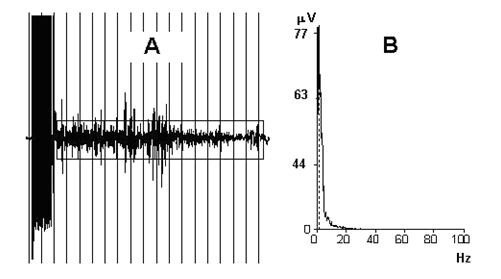Quantitative EEG for ECT-monitoring
| ECT (Electro Convulsive Treatment), or more common electro-shock treatment, is a long-proven treatment against deep depression and other psychiatric conditions. Patient outcomes at the correct indication is usually very good but temporary memory disturbances are a side effects. Previously was given electric shock treatment without sedation or muscle relaxation. Supervised was the distribution of convulsions to assess triggered epileptic activity for evoking a generalized seizure, supposed to be required for therapeutic effect. This led to the severe complications with fractures and dislocations of joints due to the intense convulsions. Therefore muscle relaxing drugs used with assisted respiration after sedation of the patient, so the convulsions diminished or disappeared. The flip side of this is that it becomes more difficult to assess the extent of convulsions and the drugs used for sedation also has antiepileptic effect which can complicate the evaluation and treatment effect of the seizure. The current equipment to deliver electro-shocks has a simpler monitoring device to monitor the triggered epileptic activity after the stimulation. The recorded activity therefore is the post-stimulus epileptic activity where inhibition of the evoked epileptic activity dominates. With this starting point, has NeuFyDi AB in cooperation with an ECT unit at a psychiatric clinic in Stockholm developed a quantitative ECT recording and method of analysis. Which offer direct detection of the epileptic activity both during the stimulation and the post-stimulus phase of the seizure. The result of this now in the process of being scientifically published. For a demonstration of these recordings please see figure below.
In the illustration above, the electroencephalographic (EEG) recording of electroconvulsive therapy (ECT). In A from left to right, the high amplitude EEG-response of the actual electrical stimulation (left) followed by the post-stimulus phase, with much lower amplitude. The current used analysis of post-stimulus activity, to predict the efficacy of the evoked epileptic activity during the actual stimulation, is probably inaccurate for this purpose because it is dominated by inhibitory activity, see B. Pending publishing is a study where the epileptic activity direct analyzed during the stimulation, the high amplitude phase to left in A. The vertical lines indicate 5 seconds (X-axis) in A. In B, the frequency distribution within the box indicated in A. The dominant peak frequency in the lowest frequency range (0,5–5 Hz), Y-axis shows EEG power (µV) and X-axis frequency (Hz) in B.
Summary The approach to analyze the evoked epileptic activity during the stimulation has in primary analysis showed differences in evoked epileptic activity for different ECT sessions and also in sessions for same individual patient. This may explain that outcome sometimes is unpredictable and that some patients are unresponsive to the ECT-treatment.
|
